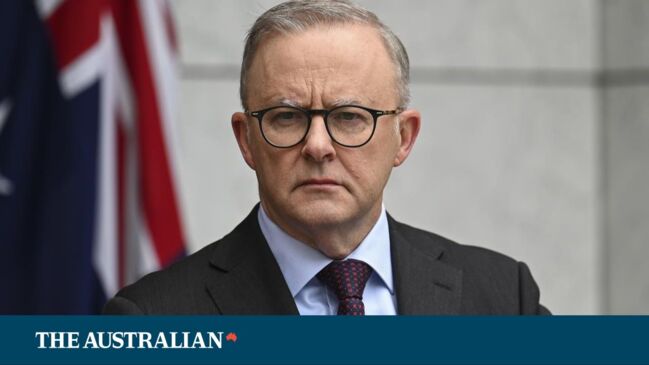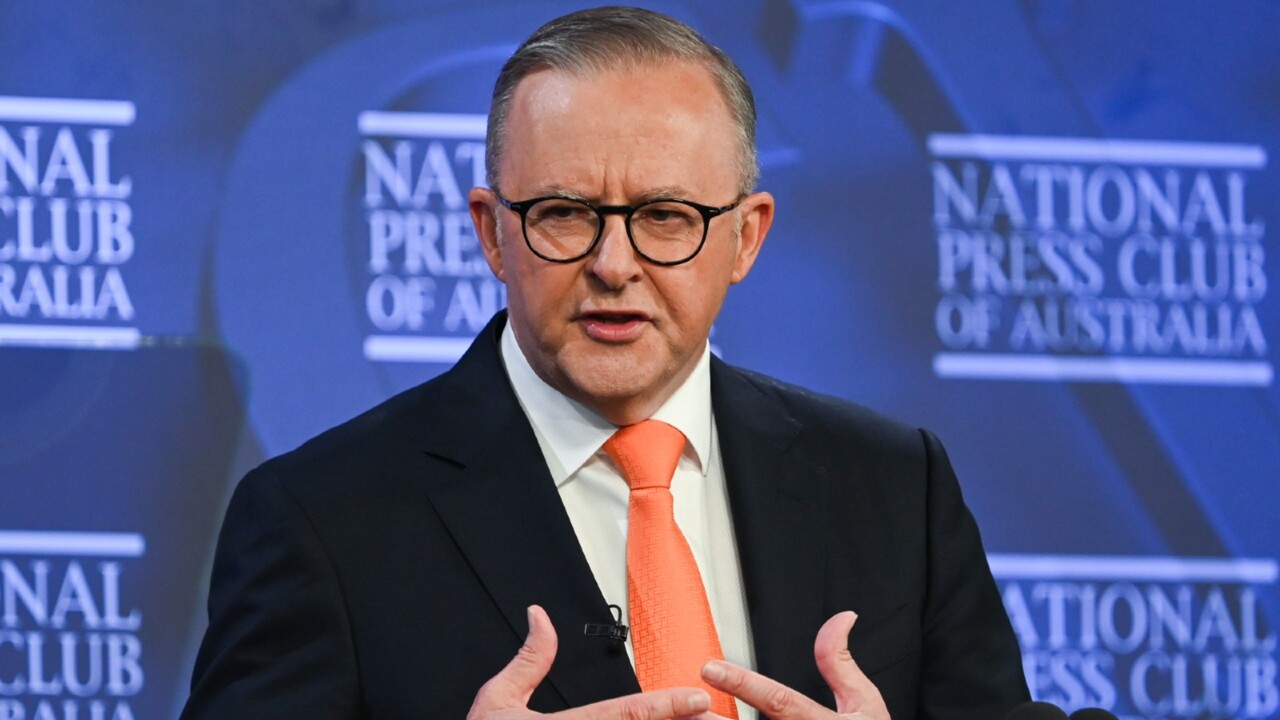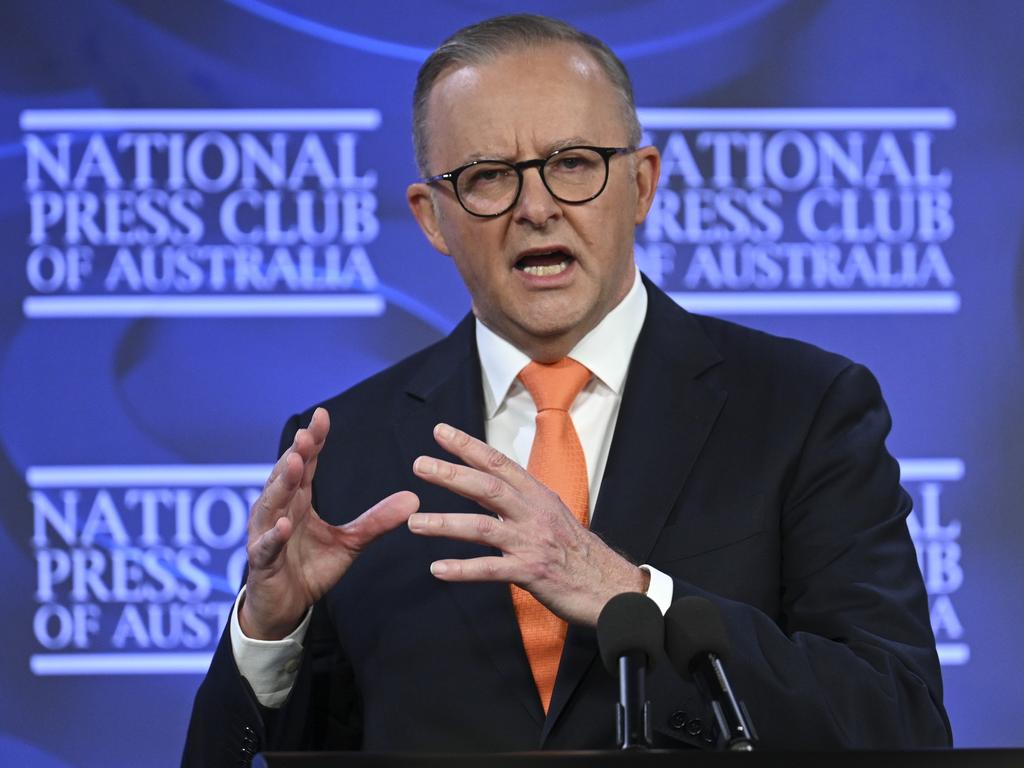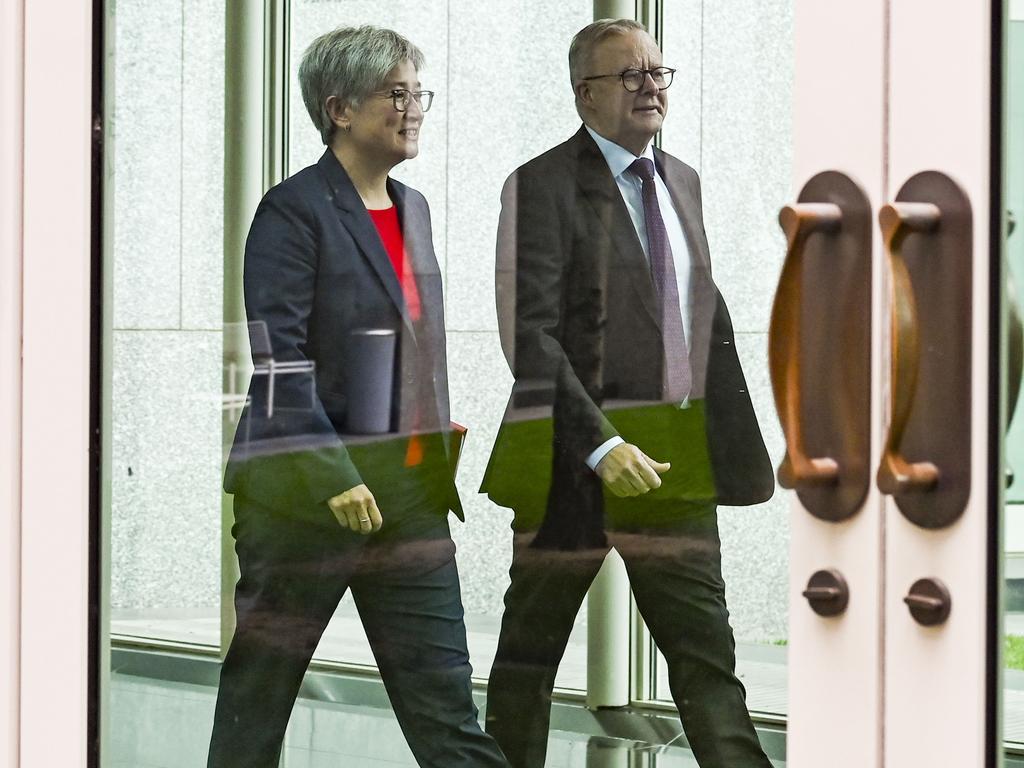Anthony Albanese’s Jedi mind trick on stage three tax dashes hope for reform
Australians seem to be living through a Star Wars parody — and the forcefulness on tax is strong with Obi-Wan Albanese.

Australians seem to be living through a Star Wars parody. At the start of this week, Prime Minister Anthony Albanese travelled to the caucus cantina in Canberra, whereupon he was stopped by journalistic imperial guards and asked about the stage three tax cuts. Waving his hand, Jedi mind trick style, Albanese replied: “These aren’t the tax cuts you’re looking for.”
Finally, after 20 months of post-election prevarications, the Albanese government has announced that it will break its election promise and modify the already legislated and budgeted stage three tax cuts. In this shift, Albanese seems to have forgotten important Labor history.
Paul Keating assumed the prime ministership in the last fortnight of 1991. He had just over a year before the federal election in early 1993 when federal Labor would celebrate 10 years in government. Keating was widely expected to lose the 1993 election but he pulled off an unexpected victory. Contributing to his successful election campaign was his insistence that he had already legislated significant tax cuts – they were “L-A-W law”. However, following the 1993 election, these “L-A-W law” tax cuts were no longer law and were shifted into superannuation. A change no doubt a factor in the significant Coalition electoral victory in 1996.
This is a history that should be particularly familiar to Albanese who entered parliament in 1996 and also to Treasurer Jim Chalmers, who wrote his doctoral thesis on the prime ministership of Paul Keating.

In announcing the stage three changes, Albanese said that this tax increase was necessary “to respond to the circumstances which we confront”. No doubt Albanese was influenced by those who successfully argued for the tax windback, framing their case in fairness – that it was unfair that higher income earners received the greatest benefit from a tax cut, notwithstanding higher earners paying the most tax.
The now announced change will tilt tax cut benefits away from higher income earners towards middle income earners. But the arguments against stage three are not really about fairness or even economics. They are about control, and who is best placed to determine how Australians spend the spoils of their labour – workers, or a political and bureaucratic elite based in a distant city.
Seemingly, it is unfair that workers earning over $150,000 receive a significant tax cut yet apparently it is perfectly fine for households earning up to $530,000 per year to receive childcare subsidies. It is also not a problem that the income threshold for access to private health insurance rebates is $288,000 a year and that there are significant, non-means-tested subsidies available to purchasers of new electric cars.
Australian governments constantly limit how much of their hard-earned income Australians can keep unless it is spent on government-approved activities.
Once upon a time, Australia had a broadly well-functioning system of transfers and support payments targeted to those in genuine need. However, the Australia government now operates a sophisticated money-laundering scheme that takes more and more money from Australians through taxes and returns it via middle- and upper-class welfare.

This is a practice masterfully refined by multiple (John) Howard governments. And for this purpose, government has built itself a shining administrative citadel on a hill in Canberra.
Rather than addressing wasteful, inefficient, and unjustified spending for the economic benefit of all Australians, the Albanese government has instead chosen to continue to surreptitiously tax working Australians through inflation-induced bracket creep.
The May 2023 budget indicated that the commonwealth government is projected to collect a thumping 26.4 per cent of GDP in revenue in 2024, more than half of which will come from income tax.
On Friday in these pages, Chalmers wrote that tax cuts are “good for workers, good for business and good for the economy”. Income tax cuts could be even more significant if the government undertook necessary and long-overdue spending reforms, delivering even greater benefits for Australian workers, business and the economy.
While campaigning for the 2022 election, Albanese repeatedly said he wanted to govern in the mould of Bob Hawke and Paul Keating. In 1985, the Hawke-Keating government introduced a pension assets test, saying it was determined to direct pension spending to those who genuinely needed it.
This Hawke-Keating government spending reform pre-dated the Hawke-Keating government tax reforms.
To govern in the mould of Hawke and Keating, Albanese and Chalmers would have first undertaken a comprehensive assault on the significant levels of wasteful government spending and unjustified welfare that retard the Australian economy. Unfortunately, this is not on offer.
If there was an actual consideration of fairness in Australia’s fiscal planning, it would be to give mind to a cohort of Australians who are not yet paying tax – the next generation of Australians who will inherit the obligation to support a bloated budget, record levels of gross debt, and an income tax system extracting increasingly disproportionate rents from workers.
At a time of near full employment and record terms of trade, the commonwealth budget should be swimming in surpluses and paying off debt. Instead, there is celebration of even the tiniest surplus. So much so that in December, when Chalmers and Finance Minister Katy Gallagher released the Mid-Year Economic and Fiscal Outlook, it showed a modest surplus but a continued trajectory of increased tax collections, spending, and debt. The commonwealth remains well on track to reach $1 trillion of gross debt by 2025-26.
American economist Thomas Sowell once shrewdly observed that “politicians can solve almost any problem – usually by creating a bigger problem”. This was again demonstrated by the Albanese government. Cost-of-living problems are not solved through money transfers. They are solved through increased productivity. And productivity is enhanced by competitive tax rates and restrained government spending.
Again, the big government empire strikes back.
Dimitri Burshtein is a principal at Eminence Advisory and a former government policy analyst. dimitriburshtein@gmail.com







To join the conversation, please log in. Don't have an account? Register
Join the conversation, you are commenting as Logout